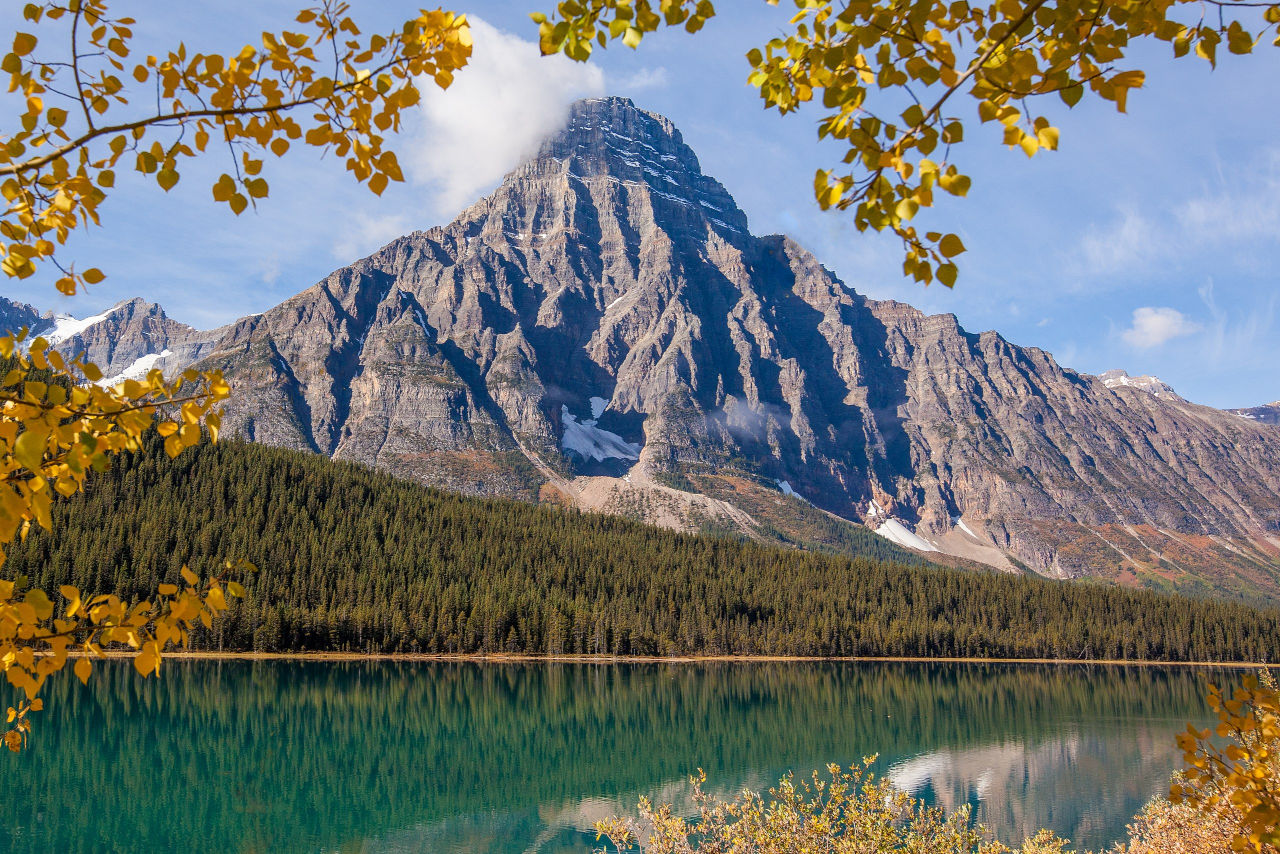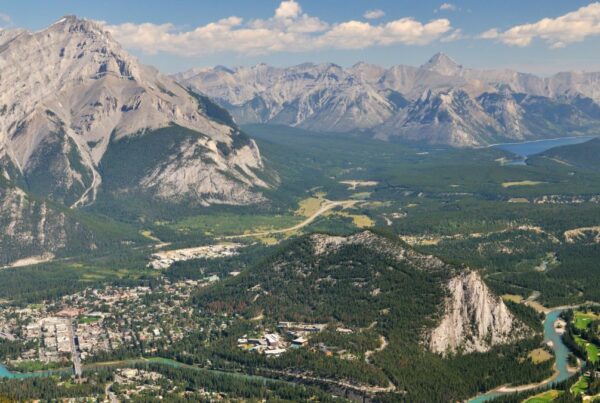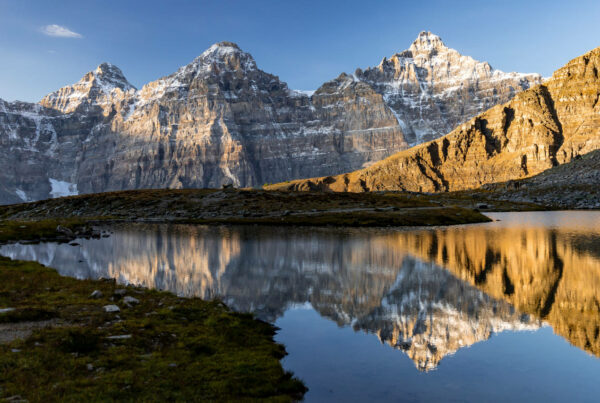One of the most spectacular peaks along the Colombia Icefields is Mount Chephren, which is beautifully reflected in the calm waters of the third Waterfowl Lake.
The mountain towers above a series of 3 beautiful lakes called the Waterfowl Lakes in the Mistaya River Valley. The origin of the name of the Mistaya River comes from the Cree language: ᒥᐢᑕᐦᐊᔭ (mistahaya), which means ‘grizzly bear’. This is a popular migration corridor for grizzly bears.
Towering above the area at 3,266 m (10,715 ft) is Mount Chephren, a pyramid-shaped mountain, which is one of the tallest and most photographed mountains along the southern part of the Icefields Parkway.
There’s an interesting story behind this iconic natural pyramid. It is named after the great Egyptian pharaoh Chephren (Khafre in ancient Egyptian) who built the second of the three Pyramids of Giza. It is also believed that the Great Sphinx was built during his reign and Mount Chephren looks like the Sphinx on its backside when you’re heading south on the Icefield Parkway just past Saskatchewan Crossing.
Chephren succeeded his father Khufu who built the Great Pyramid and his son Menkaure built the Third Pyramid, all of which happened during a time that was considered the golden age of Ancient Egypt.
The name Chephren was suggested by J. Monroe Thorington, a legendary mountaineer in the history of Banff National Park and author of the most famous book published in 1925 about the Canadian Rockies called The Glittering Mountains of Canada.
Thorington had a lifelong fascination with Egyptology and Egyptian mysticism. He did 52 first ascents in the Rockies and Selkirk Mountains. Many of the names of peaks and lakes suggested by him were accepted by the Geographic Board of Canada, including Egypt Lake and Pharaoh Peak.
Photo Credit: Hop Phan (Wikimedia Commons)
- Peru Hiking Tours And Multi-Day Treks From Cusco And Huaraz - April 19, 2025
- 10 Best Banff Hiking Tours In The Canadian Rockies - April 19, 2025
- 10 Best Vancouver Hiking Tours In The B.C. Coast Mountains - April 19, 2025





